TPO Roofing
TPO roofing, or Thermoplastic Polyolefin, is a widely used single-ply roofing membrane known for its energy efficiency and durability, making it a popular choice for both residential and commercial flat roofs. Its reflective properties help reduce energy costs by keeping buildings cooler, while its robust construction ensures longevity and resistance to various environmental factors.
TPO Roofing
As a commercial property owner or manager, choosing the right roofing system is crucial for protecting your investment and ensuring long-term performance. Enter TPO roofing – a popular and cost-effective solution that’s taking the commercial roofing world by storm. In this comprehensive guide, we’ll dive deep into the world of TPO roofing, exploring its benefits, installation process, and why it might be the perfect fit for your commercial building.
What is TPO Roofing?
TPO, or Thermoplastic Olefin, is a single-ply roofing membrane that’s gained significant popularity in the commercial roofing industry over the past few decades. Composed of a blend of polypropylene and ethylene-propylene rubber, TPO offers a unique combination of durability, flexibility, and energy efficiency.
Key Features of TPO Roofing:
- Single-ply membrane
- White or light-colored surface
- Heat-weldable seams
- Flexible and durable material
- UV-resistant
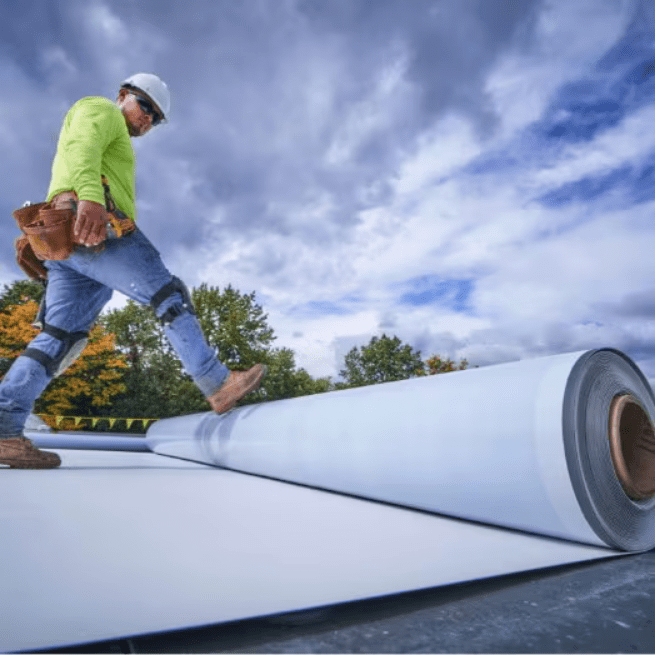
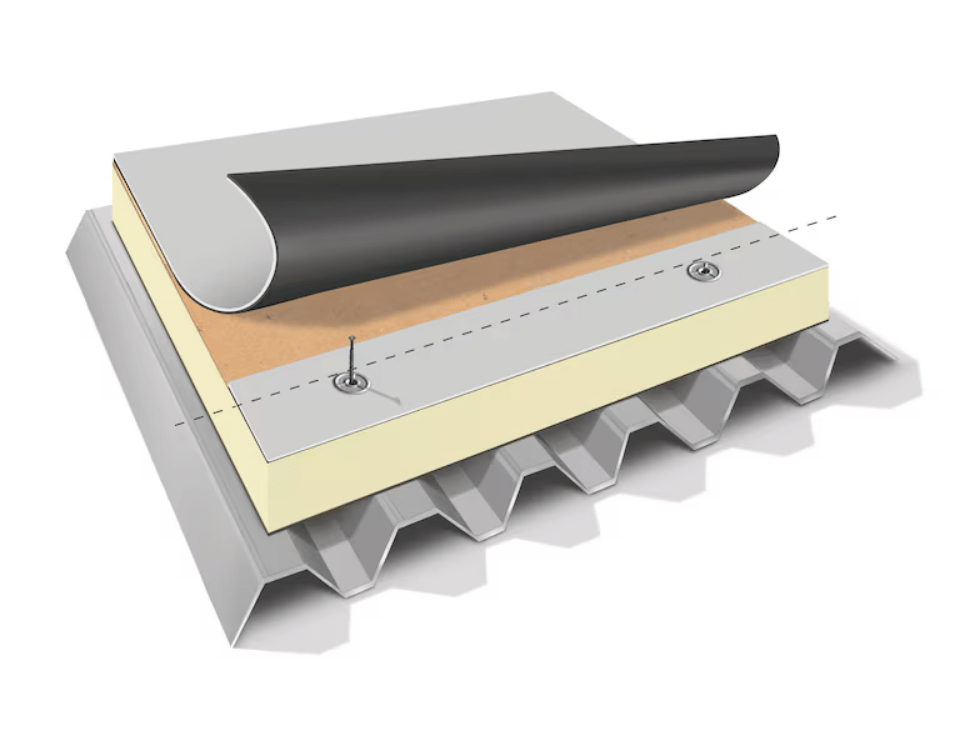
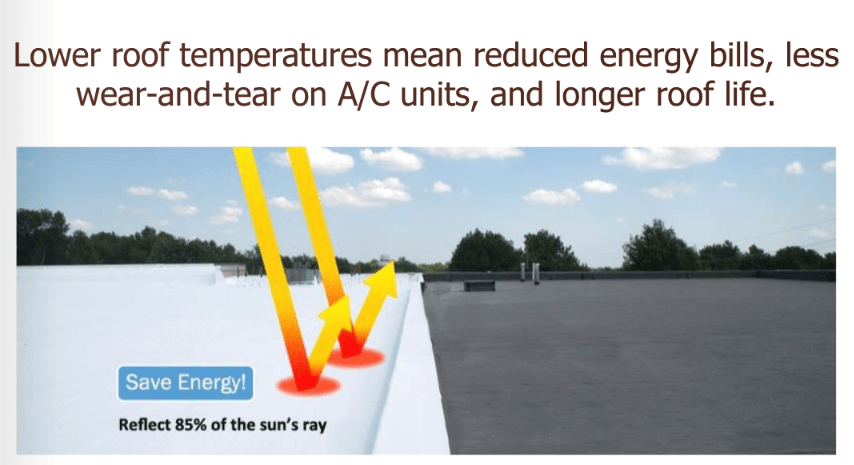
Why Choose TPO Roofing for Your Commercial Building?
- Cost-Effective Solution TPO roofing provides excellent value for your money. It’s generally less expensive than other single-ply roofing options like EPDM or PVC, making it an attractive choice for budget-conscious property owners.
- Energy Efficiency The white or light-colored surface of TPO roofing reflects sunlight, reducing heat absorption and lowering cooling costs. According to the Department of Energy, cool roofs like TPO can save building owners up to 15% on annual cooling energy use.
- Durability and Longevity TPO roofing is designed to withstand various weather conditions, including UV radiation, heat, and chemical exposure. With proper installation and maintenance, a TPO roof can last 20-30 years.
- Easy Installation The lightweight nature of TPO membranes makes them easier and faster to install compared to traditional roofing systems, reducing labor costs and minimizing business disruptions.
- Environmentally Friendly TPO roofing is recyclable and doesn’t contain harmful chemicals like chlorine, making it an eco-friendly choice for environmentally conscious businesses.
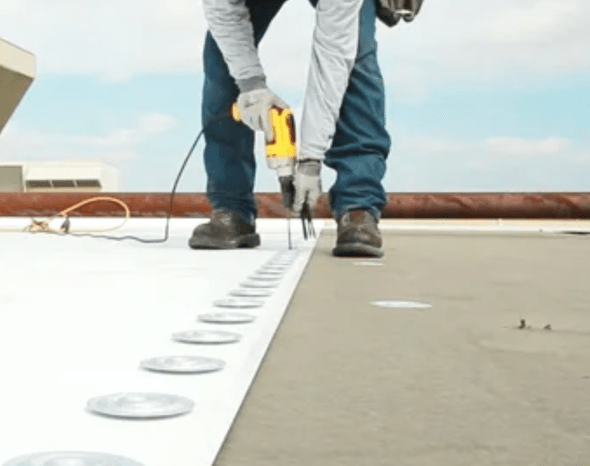
The TPO Roofing Installation Process
Understanding the installation process can help you make an informed decision and ensure proper execution. Here’s a step-by-step overview:
- Roof Preparation: The existing roof surface is cleaned and prepared, addressing any damage or moisture issues.
- Insulation Installation: A layer of insulation is installed to improve energy efficiency and provide a smooth surface for the TPO membrane.
- Membrane Placement: The TPO membrane is rolled out and positioned on the roof.
- Seam Welding: The seams between TPO sheets are heat-welded to create a watertight seal.
- Flashing and Detailing: Special attention is given to roof penetrations, edges, and corners to ensure proper waterproofing.
- Final Inspection: A thorough inspection is conducted to verify the quality of installation and address any issues.
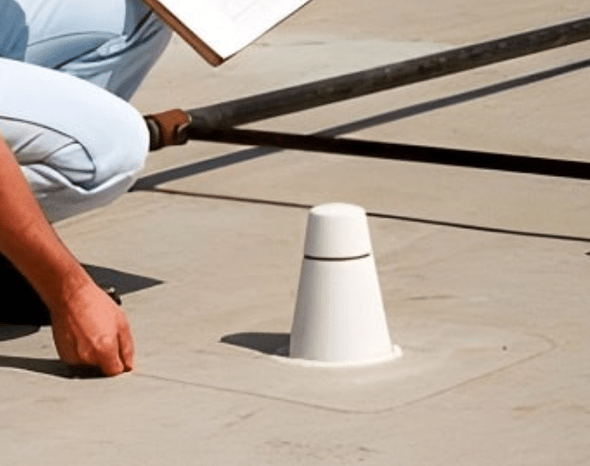
Maintaining Your TPO Roof for Optimal Performance
To maximize the lifespan and performance of your TPO roof, regular maintenance is essential. Here are some key maintenance tips:
- Regular Inspections: Schedule bi-annual inspections to catch and address potential issues early.
- Keep the Roof Clean: Remove debris, leaves, and standing water regularly to prevent damage and algae growth.
- Address Repairs Promptly: If you notice any tears, punctures, or loose seams, have them repaired immediately by a professional.
- Limit Foot Traffic: Minimize unnecessary foot traffic on the roof to prevent damage to the membrane.
- Check Drainage Systems: Ensure gutters and drains are clear to prevent water pooling on the roof.
For more in-depth maintenance guidelines, consult the National Roofing Contractors Association’s resources on commercial roof maintenance.
TPO vs. Other Roofing Systems: How Does It Compare?
To help you make an informed decision, let’s compare TPO roofing to other popular commercial roofing options:
- TPO vs. EPDM
- Cost: TPO is generally less expensive
- Energy Efficiency: TPO offers better reflectivity and energy savings
- Durability: Both offer similar lifespans with proper maintenance
- TPO vs. PVC
- Cost: TPO is typically more affordable
- Chemical Resistance: PVC has slightly better chemical resistance
- Environmental Impact: TPO is more eco-friendly due to its chlorine-free composition
- TPO vs. Built-Up Roofing (BUR)
- Installation: TPO is faster and easier to install
- Weight: TPO is significantly lighter, reducing structural stress
- Maintenance: TPO requires less maintenance than BUR
For a more detailed comparison, check out this commercial roofing guide from FacilitiesNet.
Choosing the Right TPO Roofing Contractor
The success of your TPO roofing project largely depends on the quality of installation. Here are some tips for selecting a reputable contractor:
- Look for proper licensing and insurance
- Check for manufacturer certifications
- Read customer reviews and ask for references
- Get multiple quotes and compare warranties
- Ensure they have experience with TPO roofing installations
Conclusion: Is TPO Roofing Right for Your Commercial Building?
TPO roofing offers an excellent balance of cost-effectiveness, energy efficiency, and durability for commercial properties. Its ease of installation and low maintenance requirements make it an attractive option for many building owners and managers.
However, the best roofing solution depends on your specific needs, budget, and building characteristics. We recommend consulting with a professional roofing contractor to assess your property and determine if TPO roofing is the right choice for you.
By choosing TPO roofing, you’re investing in a modern, efficient, and reliable roofing system that can protect your commercial property for decades to come.
